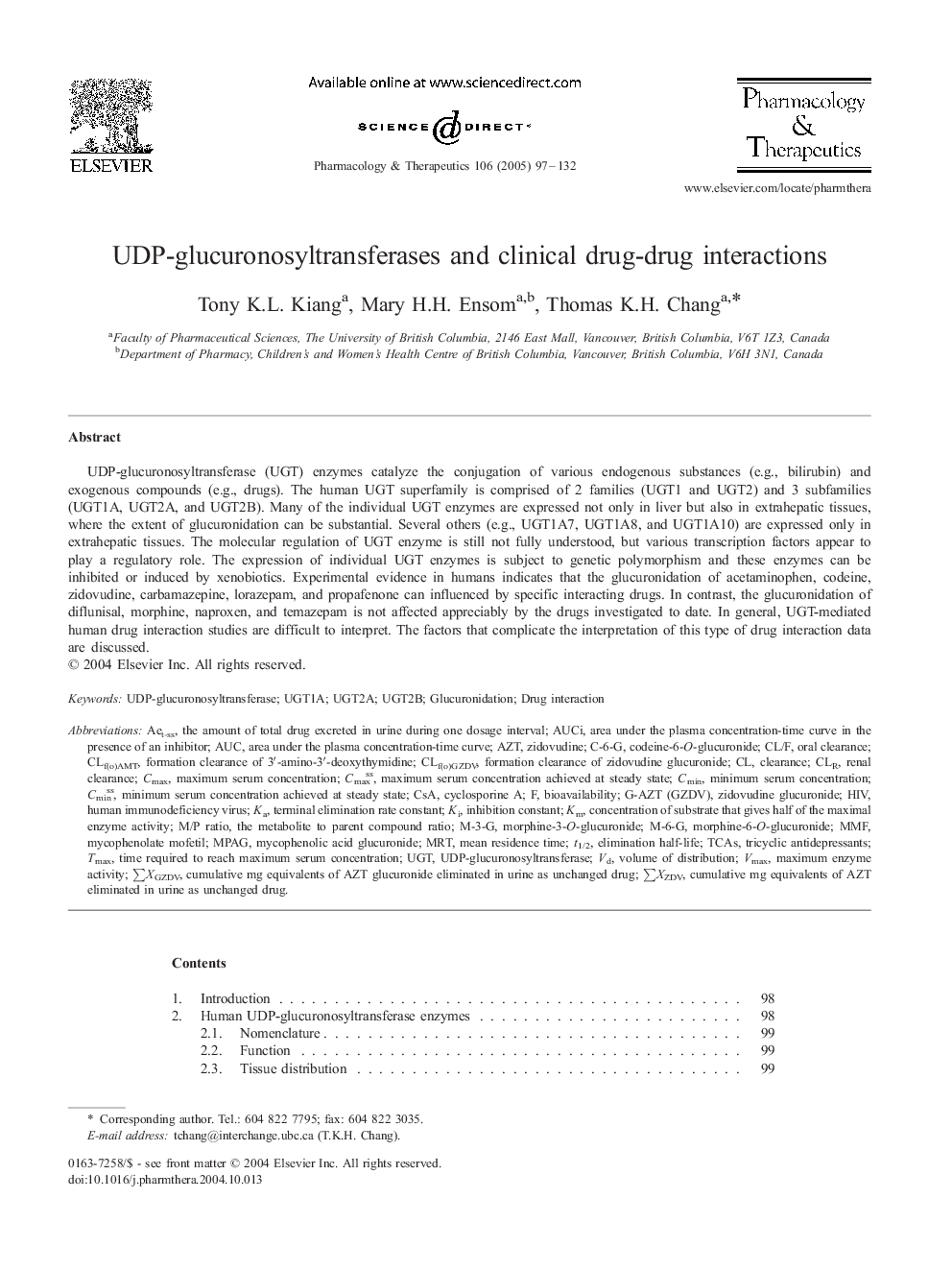| Article ID | Journal | Published Year | Pages | File Type |
|---|---|---|---|---|
| 9016145 | Pharmacology & Therapeutics | 2005 | 36 Pages |
Abstract
UDP-glucuronosyltransferase (UGT) enzymes catalyze the conjugation of various endogenous substances (e.g., bilirubin) and exogenous compounds (e.g., drugs). The human UGT superfamily is comprised of 2 families (UGT1 and UGT2) and 3 subfamilies (UGT1A, UGT2A, and UGT2B). Many of the individual UGT enzymes are expressed not only in liver but also in extrahepatic tissues, where the extent of glucuronidation can be substantial. Several others (e.g., UGT1A7, UGT1A8, and UGT1A10) are expressed only in extrahepatic tissues. The molecular regulation of UGT enzyme is still not fully understood, but various transcription factors appear to play a regulatory role. The expression of individual UGT enzymes is subject to genetic polymorphism and these enzymes can be inhibited or induced by xenobiotics. Experimental evidence in humans indicates that the glucuronidation of acetaminophen, codeine, zidovudine, carbamazepine, lorazepam, and propafenone can influenced by specific interacting drugs. In contrast, the glucuronidation of diflunisal, morphine, naproxen, and temazepam is not affected appreciably by the drugs investigated to date. In general, UGT-mediated human drug interaction studies are difficult to interpret. The factors that complicate the interpretation of this type of drug interaction data are discussed.
Keywords
Cminterminal elimination rate constantMPAGUGT1AUGT2BAUCiAZTCLRtmaxTCAsMMFVmaxMRTCmaxUGTAUCCL/Ft1/2UDP-glucuronosyltransferaseCSAclearanceOral clearanceDrug interactionVolume of distributionmaximum serum concentrationtricyclic antidepressantsZidovudineCyclosporine ABioavailabilitymycophenolate mofetilarea under the plasma concentration-time curveinhibition constantMean residence timeelimination half-lifehuman immunodeficiency virusHIVrenal clearanceGlucuronidationmycophenolic acid glucuronide
Related Topics
Health Sciences
Pharmacology, Toxicology and Pharmaceutical Science
Pharmacology
Authors
Tony K.L. Kiang, Mary H.H. Ensom, Thomas K.H. Chang,
